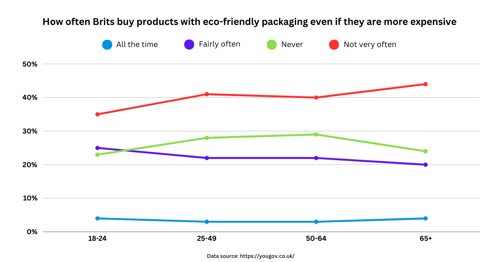The True Cost Of Sustainable Packaging
From brand heavy hitters, to boutique businesses, both consumers and organisations alike are looking to sustainable packaging to help reduce their environmental impact. However, in the UK there are still challenges in adoption on both sides. As shown by a 2023 survey from YouGov, which revealed 68% of the British consumer population over the age of 18 never buy products with eco-friendly packaging due to presumed higher costs.

While affordability plays a role in sustainability, consumer demand is growing, with the general public having a greater understanding of the detrimental impact of waste on the world’s landscape. No longer seen as a ‘nice to have’ but fast becoming an expectation, what is the true cost of sustainable packaging, and how can the industry address these challenges to achieve the shared goal of a greener future?
Sustainable packaging isn’t a ‘one size fits all’ solution, and businesses should be making informed strategic decisions, with every choice potentially having an impact on both the environment and costs. For example, reducing packaging sizes, integrating eco-materials or using natural resources from trusted suppliers might incur an initial increase in costs, but the long-term benefits are crucial considerations.
Improved packaging quality, a reduction in packaging weight and less waste can all create significant future savings, and these positive outcomes from sustainable material use should be shared, promoted and celebrated with consumers. Continued use of sustainable packaging will also support widespread adoption, which in turn will eventually drive down costs, as it becomes the industry standard.
Improved education and awareness on the benefits of sustainable packaging will encourage greener choices across the board, while Government support and backing will place pressure on green decision making. When addressing cost consideration challenges, a collaborative approach is vital to ensure benefits are realised to both consumers and the environment – i.e., reduced carbon footprint, lower waste and less reliance on harmful plastics.

Continued innovation, as well as a concentrated effort to build positive awareness, will support the rise of sustainable packaging, while understanding consumer behaviour and demand will help create a positive change in behaviour. Working towards a shared goal, ultimately sustainable packaging is not just a business decision, but one which will impact the global environment for the better, creating cleaner, greener spaces for future generations.